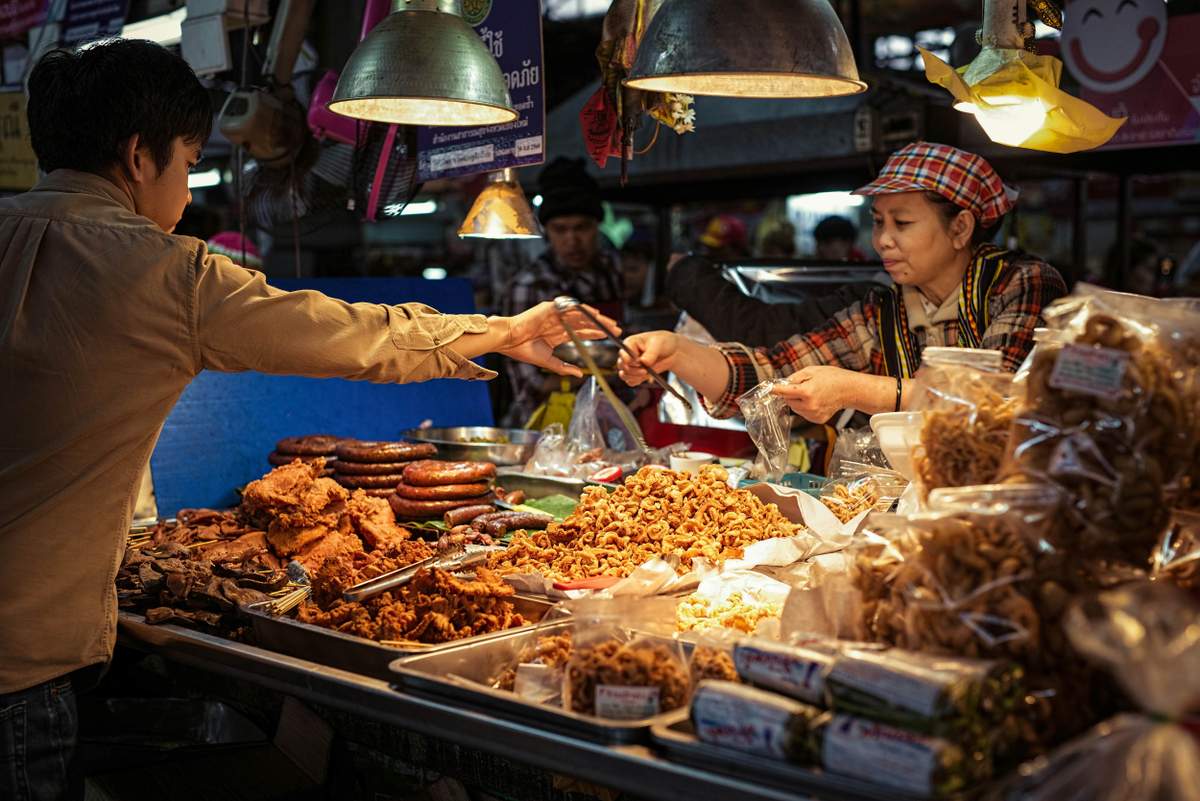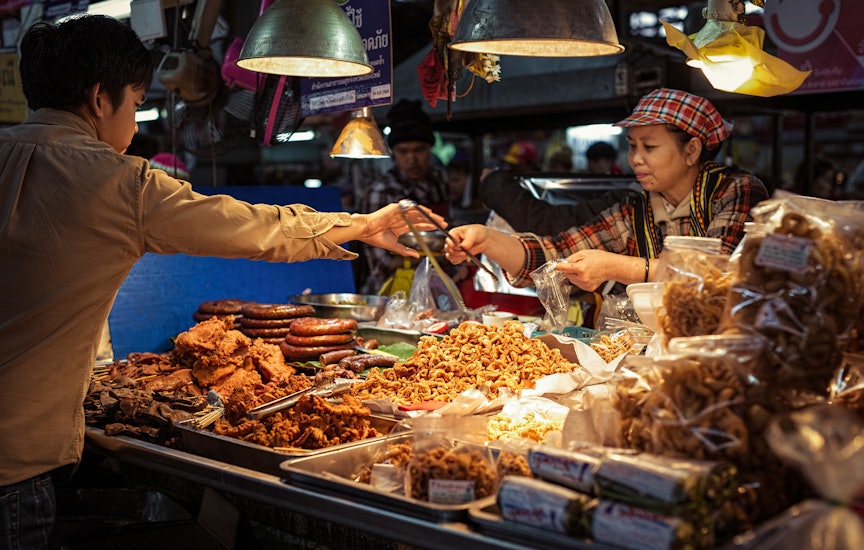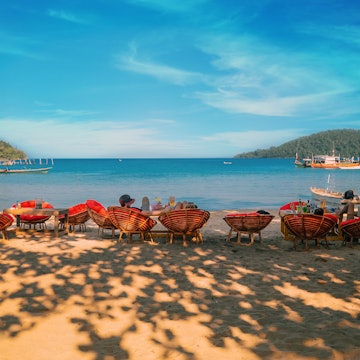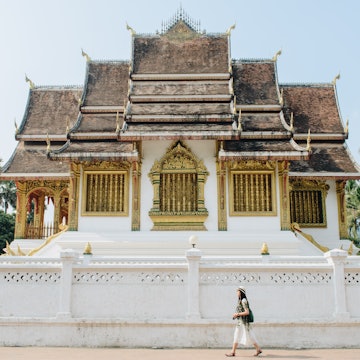
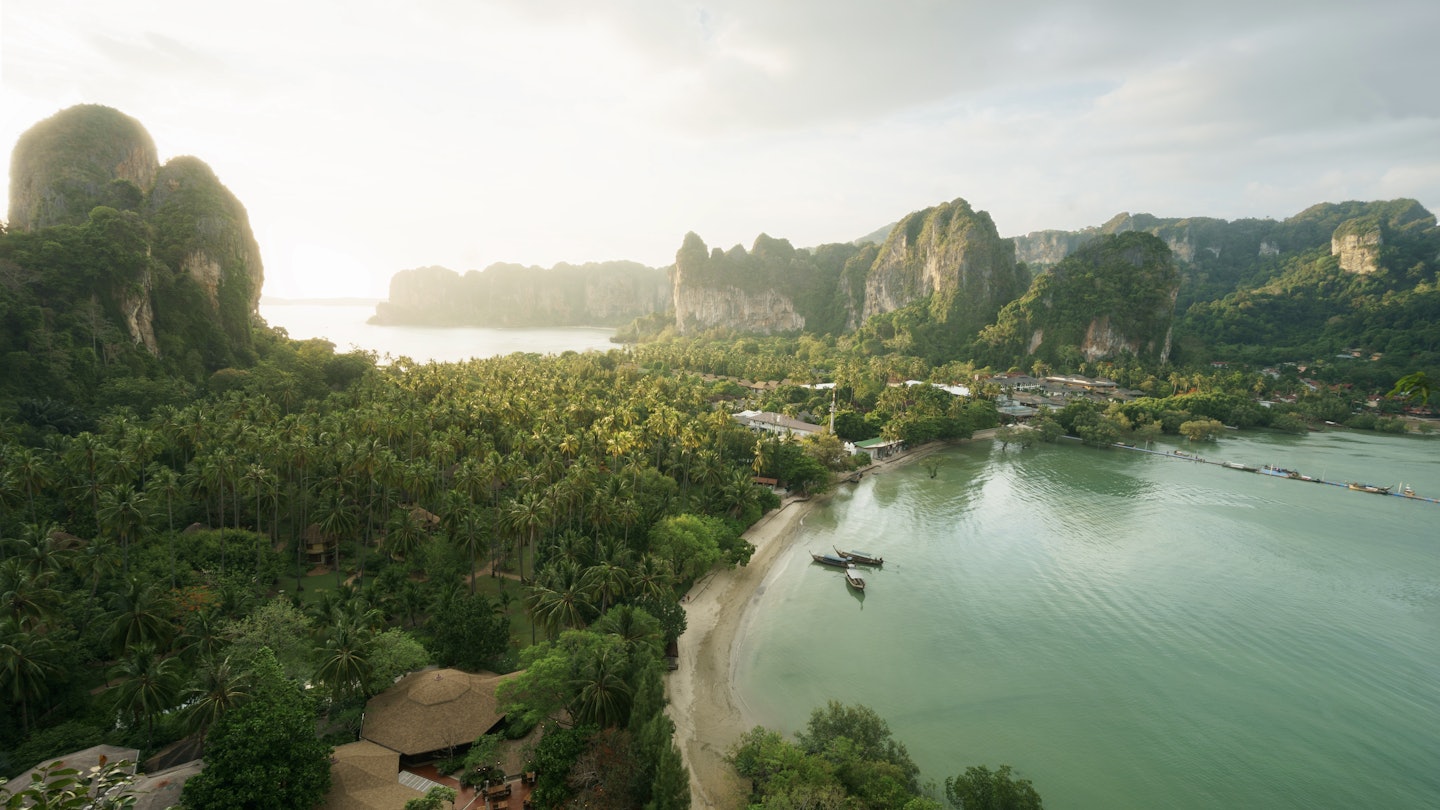
From Phi Phi to Phuket, from Krabi to Ko Samui to Railay (pictured), here are the best beaches in Thailand. Pierre Lepretre/Getty Images
White sand, turquoise waters and palm trees are high priorities for just about every visitor to Thailand. And for just about every visitor, the country delivers.
In fact, in a country with over 1500 miles (2414km) of coastline and some 1430 islands, you can expect to find a lot of postcard-perfect beaches. Yet you shouldn’t just count on lying out on them (though that’s just fine, too) – since many of these sandy areas also offer activities such as snorkeling, diving or rock climbing, not to mention access to Thailand’s amazing cuisine and unique cultural experiences.
So while you can’t go wrong, how do you begin choosing which beach (or beaches) to add to your own itinerary? Start with the list below.
We’ve tried to touch on every coastal region of the country, with a mix of beaches that are iconic and easy to reach, as well as islands that take a bit more work to get to.
Get inspired with our list of the best beaches in Thailand.
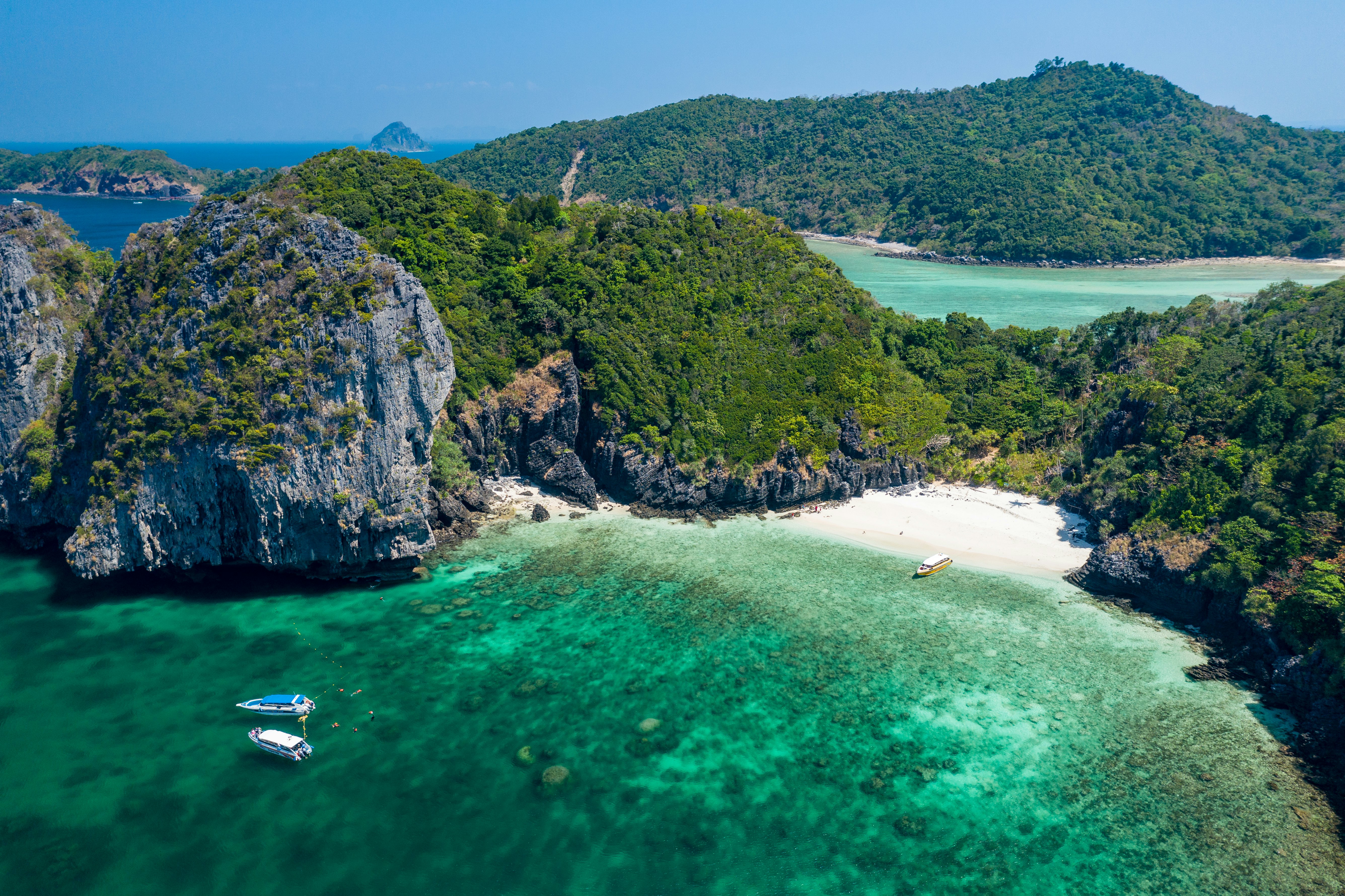
1. Nui Beach
Best beach for escaping the Phuket crowds
Big-hitter beaches in Phuket Province such as Patong and Kamala get all the press – which means they also draw all the crowds (and touts). To strike out on your own, head to this semi-hidden beach on the island’s far southern shore. Accessible via a two-mile walk down a steep hill (or a brief, bumpy ride in the back of the truck), a petite cove attractively framed by palm trees and massive boulders forms Nui Beach. You’ll find a handful of low-key bars and restaurants – and although you won’t be alone, you almost certainly won’t feel like part of the crowd.
Local tip: Nui Beach has emerged as something of an Instagram posing ground with swings, frames and photogenic seats set up at the beach’s perimeter, promising that perfect shot.

2. Ao Khanom
Best beach for encountering fishermen – and fish
For beautiful stretches of sand largely untouched by tourists, head to Nakhon Si Thammarat Province, a 12-hour bus or 15-hour train ride (or a one-hour flight) from Bangkok. In the northern part of the province, Ao Khanom offers a lengthy, picture-perfect tropical bay where you’re more likely to encounter local fishers and their brightly colored boats than crowds. If you’re lucky, you might even get to cross fins with one of the region’s adorable pink dolphins.
Local tip: Consider a side trip just south to Sichon District, where the Buddhist temple Wat Chedi is known as Thailand’s “Chicken Temple.” The devout leave cement roosters as offerings here – and tens of thousands of them, including some larger than a long-tailed boat, can be found in an adjacent chicken “cemetery.”
3. Tubtim Bay, Ko Samet
Best beach for easy access from Bangkok
It is easy to get to from Bangkok, it’s true – and Ko Samet, with its famous white sands, is a seriously beautiful island as well. On the island’s east shore, the resort of Tubtim Bay provides good accommodation, a solid restaurant and a great main beach – plus access to semi-hidden, lesser-known coves and tiny beaches.
Local tip: More popular with Thais than foreigners, Ko Samet draws lots of Thai university students and the domestic LGBTIQ+ crowd. A late-night, beachside acoustic guitar session fueled by a bottle of SangSom is a classic Ko Samet experience.

4. Ko Kut
Best beach for little-visited islands
Thailand’s east is on the radar of few beach seekers – yet those who find their way there will enjoy some of Thailand’s most beautiful – and little-visited – islands as their reward. At the edge of the Gulf of Thailand, just across from Cambodia, Ko Kut is the remotest speck of a tiny archipelago that includes the better-known Ko Chang. The beaches here, especially Hat Khlong Chao and others on the island’s west coast, have sand as fine as talcum powder and more palm trees than hotels. Since this is the fourth-largest island in Thailand, there’s much to explore both on the coast and inland, including waterfalls and day hikes.
Planning tip: You can reach Ko Kut via Laem Sok, in Trat Province. If Cambodia is on your itinerary, it’s possible to cross the border at Hat Lek.

5. Railay
Best beach for dramatic scenery
With a backdrop of sheer, towering karst cliffs that look almost artificial, Railay in Krabi Province boasts the most dramatic setting of just about any beach in Thailand. Those cliffs – as well as the karst formations that jut out from the sea – are also great for climbing, with lots of established routes. Alternatively, if you don’t want to strap on a harness, make the hike to Railay’s lagoon, which involves a stop to enjoy amazing views over the peninsula. Railay is also well positioned for boat jaunts to ocean-based climbing spots in the area or trips to hidden beaches and snorkeling spots in Phang-Nga Bay.
Planning tip: While Railay is not on an island, those cliffs mean that it can only be reached by boat from Ao Nang, Ko Phi-Phi, Krabi or Ao Nam Mao.

6. Surin Islands Marine National Park
Best beach for scuba diving
This archipelago of five islands is one of Thailand’s premier diving spots. And above sea level, the protected natural refuge offers snow-white sand, jade- and turquoise-hued water, rocky headlands, rugged jungle and wildlife galore. Home to the island’s only accommodation and restaurant, Ko Surin Nuea is one of the best spots to appreciate all that’s on offer. Another of the islands, Ko Surin Tai, is home to a relocated community of Moken, who were known in another era as “sea gypsies”: before the 2004 tsunami, they were among the few cultures who organized their society almost entirely at sea.
Planning tip: The only way to overnight here is via national-park accommodation on Ko Surin Nuea. You can book rooms (or tents) via the DNP official online portal once in Thailand, or through agents on the mainland in Khuraburi (who also operate transportation to and from the islands).

7. Maya Bay
Best beach for a cinematic experience
Located on an island that forms part of Hat Noppharat Tara–Mu Ko Phi Phi National Park, Maya Bay is simply one of Thailand’s most gorgeous beaches. Indeed, its fine white sand, clear waters and palm trees were so perfect that it was featured in the 2000 film The Beach. Unfortunately, this star turn led to the same fall from grace that beset its fictional counterpart: too many people found out about it.
In 2018, Thai authorities decided to close Maya Bay. After a clean-up program and some time for the natural environment to recover, it reopened in 2022 with strict restrictions on visitor numbers, visit duration (one hour), activities (swimming is not allowed) and strict sustainability goals.
Planning tip: Access to Maya Bay via speedboat from Krabi, Ko Phi-Phi Don and Ko Lanta is generally banned between August and October. It’s not possible to overnight there at any time of year.
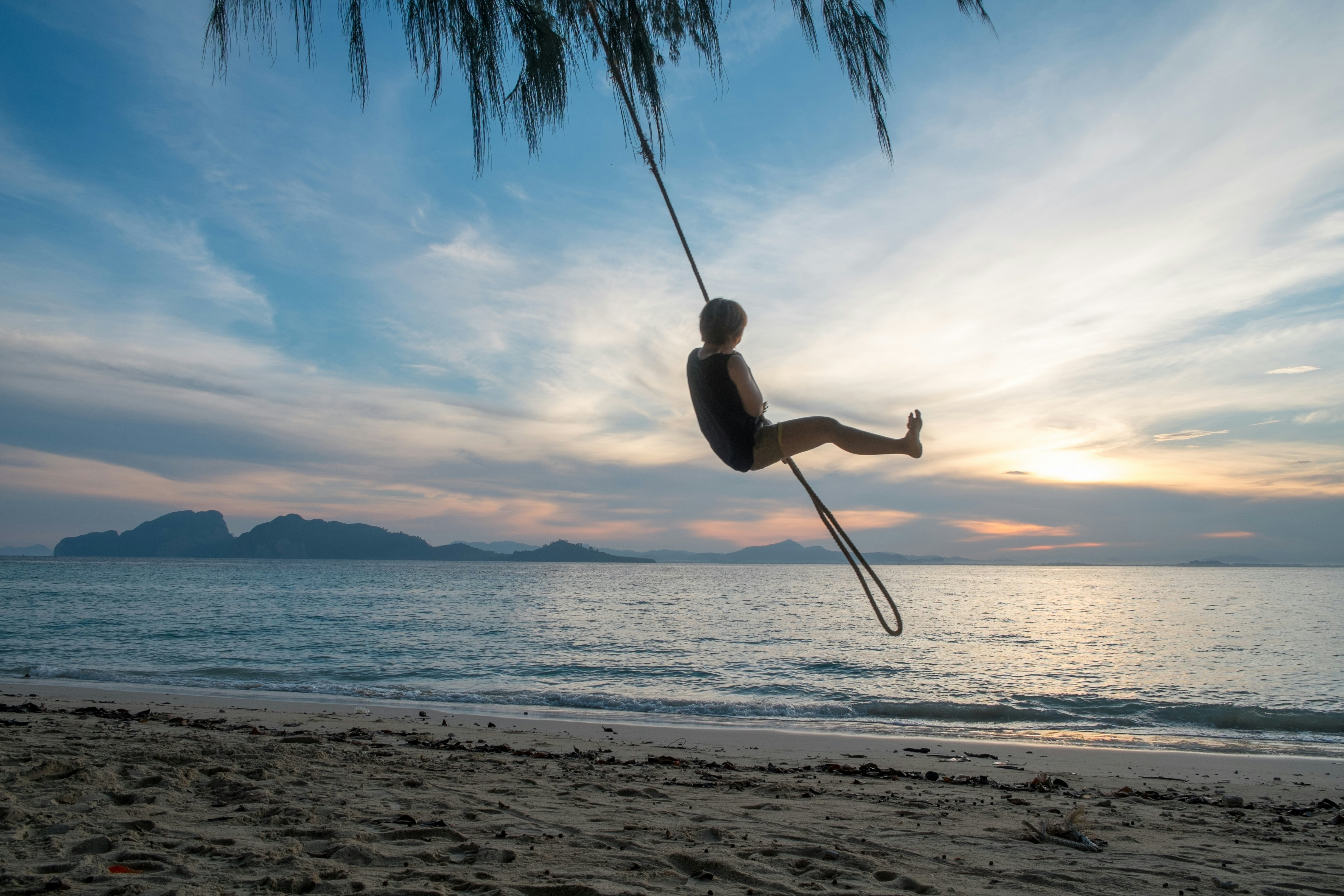
8. Sunset Beach, Ko Kradan
Best secluded Thailand beach
Trang Province boasts some of Thailand’s most fabulous beachy areas – and, away from the typical visitor circuit, they receive relatively few visitors. Arguably the handsomest of the lot is Ko Kradan, an island with slender, silky white sand beaches that ring a lush, jungly interior. While there’s little development anywhere on the island, if you really want to escape it all, head to Sunset Beach, a tiny, rocky outpost on the island’s western shore. It might be one of the best secluded beaches in Thailand.
Planning tip: The landlocked provincial capital and likely your access to the island, Trang is one of Thailand’s best food cities. Be sure to tack on a night here to take advantage of the city’s fantastic dim sum halls, noodle shacks and markets.

9. Bottle Beach, Ko Pha-Ngan
Best beach for avoiding full-moon parties
The laid-back vibes of Ko Pha-Ngan have drawn backpackers since the 1970s. These days, the infamous Full Moon Party is the island’s biggest attraction, and the event has its passionate fans as well as detractors. Yet if you’re not looking to party, you’ll find plenty of quiet, coastal, sandy places well away from the dance floor. Located on the island’s northern shore, Hat Khuat (also known as Bottle Beach) consists of a dreamy slice of white sand, backed by green hills and fronted by turquoise waters. When you’re finished sunbathing, there are opportunities for swimming, snorkeling or even a day hike to a nearby fishing village.
Planning tip: The quietest months on Ko Pha-Ngan are April to June.
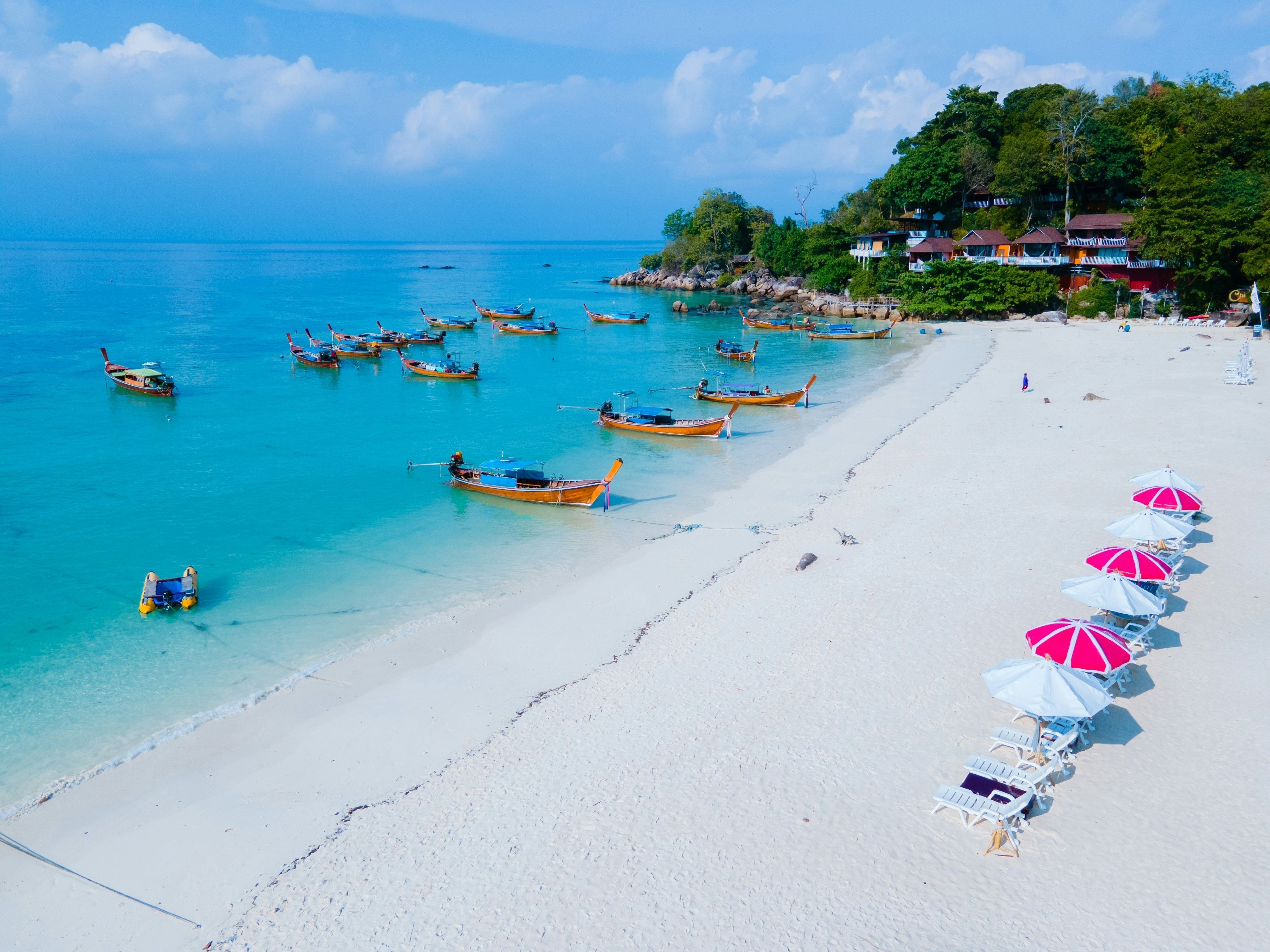
10. Ko Lipe
Best beach to find vacationing Thais
Among Thai tourists, Ko Lipe has been the “it” island escape for several years now thanks to its remote location in Satun Province and access to some of the best diving in the region. Some unpleasant inland development has followed as a result. Yet the island’s two longest beaches, Sunset Beach and Sunrise Beach, still amaze: both salt-white crescents of sand backed by verdant hills, with access to nearby protected reefs a few meters off the shore.
Planning tip: Ko Lipe is generally only accessible from mid-October to mid-May via boats to/from Pak Bara in Satun. Have aspirations to go beyond Thailand? Boats link Ko Lipe and Pulau Langkawi in Malaysia.

The best times to visit Thailand beaches
Peak season on all islands and mainland beaches is December to February. On the Andaman Coast and the islands off the eastern seaboard, crowds start to thin as rainy season (June to October) approaches. But July and August are still busy on the southern gulf islands of Ko Samui, Ko Pha-Ngan and Ko Tao, where good weather remains until the monsoon season from October to December.
Most mainland beaches get the monsoon between June and October, except for Ao Khanom, which has similar weather to the southern gulf islands. All beaches get much busier and prices go up on public holidays, especially during Songkran, the Thai New Year, in April.

How to visit beaches in Thailand responsibly
Thailand’s islands and beaches are so popular that tourism infrastructure is often stretched to the limit, especially during the peak winter tourist season (December to February).
Rampant development is increasingly threatening ecosystems as larger hotels and mega resorts have replaced guesthouses and beach huts, Jet Skis buzz across bays, and islands struggle to maintain adequate fresh water supplies and to dispose of waste without negatively impacting the environment. Water pollution and large numbers of visitors can have a harmful effect on coral reefs especially.
Visitors can play their part in reducing the impact of overtourism.
Opt for lesser-known islands or beaches such as Ko Kut, Ko Mak and Ko Wai on the eastern seaboard, or Ko Yao Noi, Ko Chang (Ranong) or Ko Phayam on the Andaman Coast.
Travel out of high season – if you don’t mind a little monsoon rain, the quietest (and cheapest) period on the Andaman Coast is June to October.
Check the eco-credentials and safety records of tour operators and dive outfits before booking.
Dispose of garbage carefully.
Take care when diving and snorkeling. Remember that it is an offense to damage or remove coral in marine parks and make sure that no equipment touches the reef.





